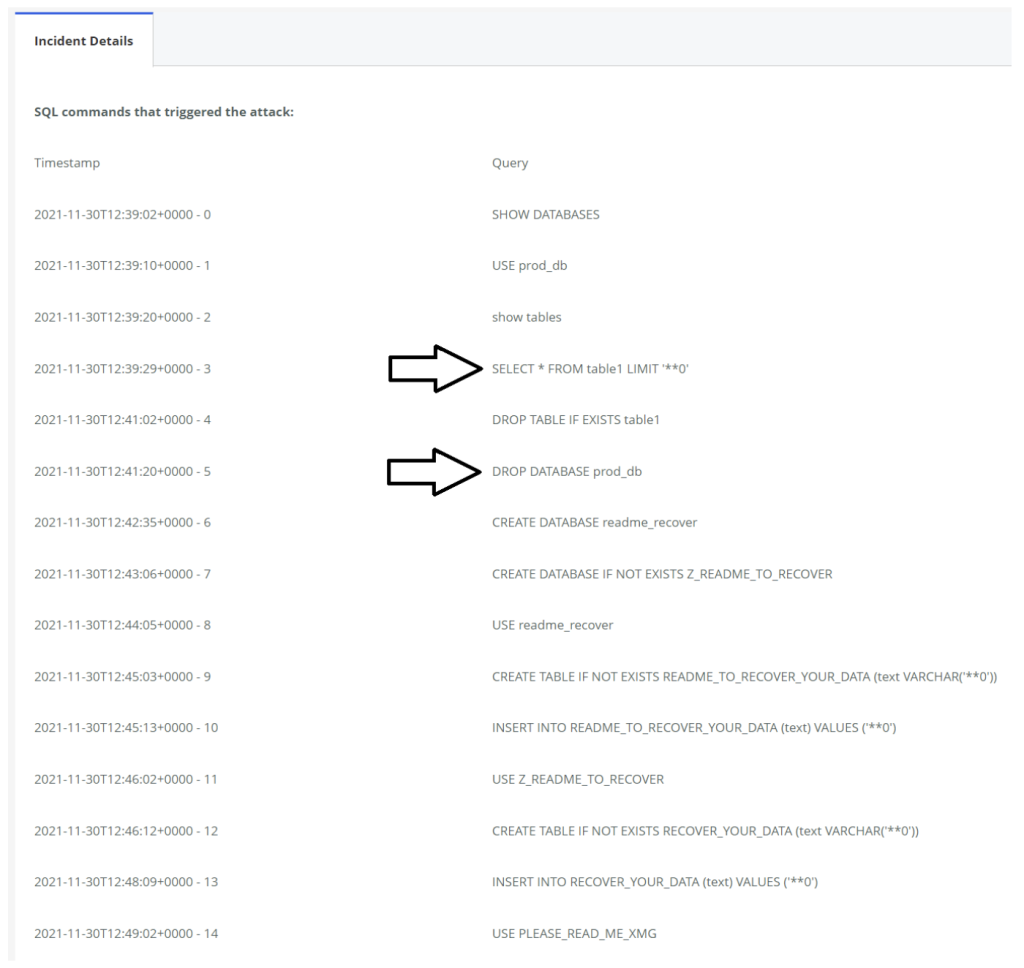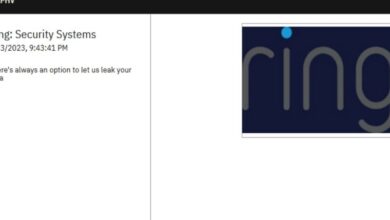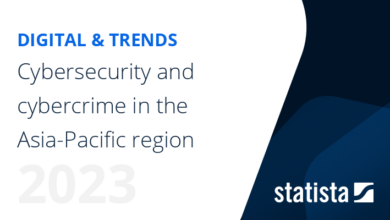
Early Detection The Key to Tackling Security Breaches
Early detection is the key to tackling security breaches. We live in a hyper-connected world, where a single vulnerability can expose sensitive data and cripple an entire organization. Think about it – the difference between discovering a breach within hours versus weeks can be the difference between a minor inconvenience and a catastrophic event. This post dives into the critical importance of proactive security measures, explores the telltale signs of a compromise, and Artikels strategies to build a robust defense system.
From understanding the economic and reputational fallout of delayed detection to leveraging cutting-edge technologies like AI and machine learning, we’ll cover everything you need to know to stay ahead of the curve. We’ll even look at the surprisingly crucial human element – your employees – and how their awareness can be your strongest line of defense. Get ready to transform your approach to cybersecurity!
The Importance of Proactive Security Measures

In today’s interconnected world, cybersecurity threats are an ever-present danger. Reactive security measures, responding only after a breach has occurred, are simply insufficient. A proactive approach, focusing on prevention and early detection, is crucial for minimizing damage and maintaining business continuity. The cost of inaction far outweighs the investment in robust security practices.Proactive security measures are essential because the economic and reputational consequences of delayed breach detection can be devastating.
Ignoring the early warning signs can lead to significant financial losses and irreversible damage to a company’s brand.
Economic Consequences of Delayed Breach Detection
The longer a security breach goes undetected, the more extensive the damage. Data exfiltration, system compromise, and operational disruption all escalate over time. Consider the costs associated with forensic investigations, legal fees, regulatory fines (like GDPR penalties), and the potential for lost revenue due to downtime and customer churn. A delayed response also increases the complexity and cost of remediation.
The longer malicious actors have access to systems, the more data they can steal and the more damage they can inflict. This can result in millions of dollars in losses, impacting not just the bottom line but also long-term investor confidence. For example, the 2017 Equifax breach cost the company over $700 million in fines, legal fees, and remediation efforts – a price tag that could have been significantly reduced with earlier detection.
Reputational Damage Associated with Late Breach Discovery
A delayed discovery of a security breach severely damages a company’s reputation. Customers lose trust, potentially leading to a decline in sales and market share. Investors may lose confidence, impacting the company’s stock price. Furthermore, a tarnished reputation can make it difficult to attract and retain talent. The negative publicity surrounding a data breach can be long-lasting, significantly impacting the company’s brand image and overall value.
The Target breach in 2013, for example, resulted in a significant drop in customer confidence and a lasting impact on the company’s reputation, despite their efforts to recover.
Examples of Successful Proactive Security Strategies
Several proactive security strategies can significantly improve a company’s security posture. These include implementing robust intrusion detection and prevention systems (IDPS), regularly conducting security audits and penetration testing, employing multi-factor authentication (MFA), and providing comprehensive security awareness training to employees. Investing in advanced threat intelligence and utilizing security information and event management (SIEM) systems can also help in early detection and response.
Regular software patching and updates are also vital to prevent vulnerabilities from being exploited. A strong security culture, where security is a top priority across all departments, is also paramount.
Hypothetical Scenario: Early vs. Late Breach Detection
Imagine a small e-commerce business. In Scenario A (early detection), their intrusion detection system flags suspicious activity within hours of a potential breach. Their security team quickly investigates, isolates the affected systems, and prevents further data loss. The incident is contained within days, with minimal financial and reputational impact. In Scenario B (late detection), the breach goes unnoticed for weeks.
By the time it’s discovered, sensitive customer data has been stolen, causing significant financial losses due to legal fees, regulatory fines, and reputational damage leading to lost customers. The cost of remediation is exponentially higher, and the company faces a protracted recovery process.
Cost Comparison: Early vs. Late Breach Detection
| Aspect | Early Detection | Late Detection |
|---|---|---|
| Forensic Investigation | $10,000 – $50,000 | $100,000 – $500,000+ |
| Legal Fees | $5,000 – $25,000 | $50,000 – $250,000+ |
| Regulatory Fines | Minimal or None | Millions of dollars (depending on regulations and data involved) |
| Reputational Damage | Minimal | Significant loss of customer trust, potential for long-term damage |
Identifying Early Warning Signs of a Security Breach

Early detection is paramount in mitigating the damage caused by security breaches. Recognizing the subtle signs of a compromise can significantly reduce the impact and cost associated with a successful attack. This involves understanding common indicators of compromise, leveraging advanced security tools, and proactively identifying vulnerabilities within your network infrastructure.
Early detection of security threats is crucial; a proactive approach significantly reduces damage. Building secure applications is paramount, and that’s where understanding the capabilities discussed in this article on domino app dev the low code and pro code future becomes vital. Ultimately, robust development practices, coupled with vigilant monitoring, are the cornerstones of effective security, ensuring early detection remains our strongest defense.
Common Indicators of Compromise (IOCs)
Identifying IOCs requires diligent monitoring and analysis of system logs and network traffic. These indicators can range from unusual login attempts and unauthorized access to changes in system configurations and unexpected data exfiltration. Recognizing these patterns early is crucial in preventing a full-blown breach. For example, a sudden spike in failed login attempts from unusual geographic locations could indicate a brute-force attack in progress.
Similarly, the detection of unusual outbound network traffic to unfamiliar IP addresses might suggest data exfiltration. Consistent monitoring and analysis of these indicators are essential.
The Role of Security Information and Event Management (SIEM) Systems
SIEM systems play a vital role in consolidating and analyzing security logs from various sources across the network. By aggregating data from firewalls, intrusion detection systems, and other security devices, SIEM systems provide a centralized view of security events. This centralized view allows security analysts to identify patterns and anomalies that might indicate a security breach. For instance, a SIEM system can correlate multiple events, such as a successful login followed by unusual file access patterns, to pinpoint a potential compromise.
Effective use of SIEM requires careful configuration and ongoing tuning to minimize false positives and maximize detection accuracy.
Intrusion Detection and Prevention Systems (IDS/IPS)
IDS/IPS systems act as a first line of defense against network-based attacks. IDS passively monitors network traffic for malicious activity, while IPS actively blocks or mitigates identified threats. Implementing both IDS and IPS provides a layered approach to security, enhancing the overall protection against intrusion attempts. An IDS can detect suspicious patterns like port scans or known malware signatures, while an IPS can block malicious traffic before it reaches its target.
Regularly updating the signature databases of both systems is crucial for maintaining their effectiveness against emerging threats. For example, an IPS can be configured to block traffic originating from known malicious IP addresses or to prevent unauthorized access to specific ports.
Potential Vulnerabilities in Common Network Architectures
Common network architectures, such as those employing traditional perimeter firewalls and virtual private networks (VPNs), can have inherent vulnerabilities. Insufficiently configured firewalls, weak VPN credentials, and outdated network devices can create entry points for attackers. Furthermore, the increasing reliance on cloud services introduces additional vulnerabilities if not properly secured. For example, misconfigured cloud storage buckets can expose sensitive data to unauthorized access.
Regular security assessments and penetration testing are crucial to identify and mitigate these vulnerabilities.
Best Practices for Regular Security Audits and Penetration Testing
Regular security audits and penetration testing are essential for identifying and addressing vulnerabilities before they can be exploited. Security audits involve a systematic review of security policies, procedures, and controls to ensure compliance with industry best practices and regulatory requirements. Penetration testing simulates real-world attacks to identify vulnerabilities in the system. These tests should be conducted regularly, and ideally by an independent third-party security firm.
A well-defined scope, clear objectives, and detailed reporting are crucial for effective penetration testing. The findings from both audits and penetration tests should be used to prioritize remediation efforts and improve the overall security posture.
Developing and Implementing an Effective Response Plan

A robust incident response plan is the unsung hero of cybersecurity. It’s not just about reacting to a breach; it’s about minimizing damage, maintaining business continuity, and learning from the experience. A well-defined plan, integrated with early detection protocols, ensures a swift and coordinated response, reducing the impact of a security incident significantly.A comprehensive incident response plan should be a living document, regularly reviewed and updated to reflect changes in technology, threats, and your organization’s structure.
It needs to be easily accessible to all relevant personnel and clearly Artikel roles, responsibilities, and escalation procedures. Think of it as your cybersecurity playbook – the more prepared you are, the better you’ll perform under pressure.
Incident Containment Steps
Upon initial detection of a security breach, swift action is paramount. The goal is to contain the breach, preventing further damage and limiting the scope of the compromise. This involves immediately isolating affected systems, disabling compromised accounts, and blocking malicious traffic. A critical step is also documenting all actions taken, preserving evidence for later analysis and potential legal proceedings.
Consider using a pre-defined checklist to ensure nothing is overlooked during this high-pressure situation. For example, a compromised server might be immediately disconnected from the network, its backups reviewed for contamination, and system logs thoroughly examined.
Effective Communication Strategies During a Security Incident
Clear, consistent, and timely communication is vital during a security incident. This involves both internal communication with staff and external communication with affected parties, such as customers, partners, or regulatory bodies. Internal communication should focus on providing updates, assigning tasks, and maintaining morale. External communication should be transparent and honest, acknowledging the incident and outlining steps being taken to address it.
Pre-prepared communication templates and a designated spokesperson can streamline this process. For instance, a pre-written press release can be adapted and released quickly once the scope of the breach is understood, rather than scrambling to create one under duress.
Comparison of Incident Response Methodologies
Various incident response methodologies exist, each with its own strengths and weaknesses. The NIST Cybersecurity Framework, for example, provides a risk-based approach, focusing on identifying, protecting, detecting, responding to, and recovering from cybersecurity incidents. Other models, like the SANS Institute’s incident handling guide, offer a more detailed, step-by-step process. The choice of methodology depends on factors like organization size, resources, and risk tolerance.
A smaller organization might adopt a simpler, more streamlined approach, while a larger enterprise might require a more complex and comprehensive framework. Key differences lie in the level of detail, the emphasis on specific phases, and the tools and technologies recommended.
Incident Response Process Flowchart
A clear understanding of the incident response process is crucial for effective execution. The following flowchart Artikels the typical steps:
- Preparation: Develop and maintain an incident response plan, train personnel, and establish communication protocols.
- Detection & Analysis: Identify the security incident, analyze its scope and impact, and gather evidence.
- Containment: Isolate affected systems, block malicious traffic, and prevent further damage.
- Eradication: Remove malware, restore compromised systems, and secure vulnerabilities.
- Recovery: Restore systems and data, verify functionality, and ensure business continuity.
- Post-Incident Activity: Conduct a post-incident review, document lessons learned, and update the incident response plan.
Utilizing Technology for Early Detection
In today’s complex threat landscape, relying solely on human vigilance for security is insufficient. Early detection of security breaches requires a robust technological arsenal capable of analyzing vast amounts of data, identifying anomalies, and responding swiftly. This involves leveraging the power of artificial intelligence, security analytics, and automated response systems to proactively protect against cyber threats.
The integration of advanced technologies is crucial for shifting from a reactive to a proactive security posture. By automating threat detection and response, organizations can significantly reduce the impact and cost associated with security breaches, minimizing downtime and protecting sensitive data. This proactive approach is far more efficient and cost-effective than attempting to remediate a breach after it has already occurred.
Artificial Intelligence and Machine Learning in Threat Detection
AI and ML algorithms analyze massive datasets of network traffic, system logs, and user behavior to identify patterns indicative of malicious activity. Unlike traditional signature-based detection, which relies on known threats, AI/ML can detect zero-day exploits and previously unseen attack patterns. For example, an ML model trained on historical network traffic can identify unusual spikes in data transfer or connections to suspicious IP addresses, flagging potential intrusions before they escalate.
This proactive approach allows security teams to investigate and mitigate threats before they cause significant damage.
Security Analytics and Threat Intelligence Platforms
Security analytics platforms collect and correlate data from various sources, providing a comprehensive view of an organization’s security posture. These platforms utilize advanced analytics techniques, including machine learning, to identify anomalies and potential threats. Threat intelligence platforms, on the other hand, provide access to external threat data, enabling organizations to proactively protect against known vulnerabilities and emerging threats.
By integrating these platforms, organizations can gain valuable insights into their attack surface and prioritize mitigation efforts. A real-world example would be a platform identifying a specific malware variant targeting a particular type of software used within the organization, allowing for immediate patching and preventative measures.
Endpoint Detection and Response (EDR) Solutions
EDR solutions provide real-time visibility into endpoint activity, enabling organizations to detect and respond to threats at the endpoint level. These solutions monitor processes, file activity, and network connections on individual devices, identifying malicious behavior that might otherwise go unnoticed. EDR systems often incorporate AI/ML to detect advanced persistent threats (APTs) and other sophisticated attacks. For instance, an EDR solution might detect unusual file access patterns, such as a program attempting to access system files it shouldn’t, indicating potential malware infection.
This allows for rapid isolation of the affected device and prevention of further compromise.
Key Features of Effective Security Automation Tools
Effective security automation tools streamline security operations, reducing manual effort and improving response times. Key features include automated threat detection, incident response, vulnerability management, and reporting. These tools can automate tasks such as patching vulnerabilities, isolating infected systems, and generating reports on security incidents. A well-designed automation system can significantly reduce the time it takes to respond to a security incident, minimizing the potential damage.
For example, an automated system can automatically block malicious IP addresses identified by the threat intelligence platform, preventing further attacks.
Hypothetical System Architecture Incorporating Multiple Early Detection Technologies
A hypothetical system architecture could integrate EDR solutions at the endpoint level, feeding data into a security analytics platform. This platform would correlate data from various sources, including network security devices, threat intelligence feeds, and log management systems. AI/ML algorithms within the analytics platform would analyze this data to identify anomalies and potential threats. Security automation tools would then automatically respond to identified threats, such as isolating infected systems, patching vulnerabilities, and blocking malicious traffic.
The system would also generate alerts and reports, providing security teams with the information they need to effectively manage their security posture. This integrated approach provides a multi-layered defense, significantly improving the organization’s ability to detect and respond to security breaches.
The Human Element in Early Detection
The most sophisticated security systems are rendered useless if the human element is overlooked. Employees are often the first line of defense, and their vigilance, knowledge, and adherence to security protocols are crucial for early breach detection. A strong security culture, built on comprehensive training and consistent reinforcement, is paramount to mitigating the human risk factor.Employee security awareness training is not a one-time event; it’s an ongoing process of education and reinforcement.
It’s about fostering a mindset where security is everyone’s responsibility, not just the IT department’s. Regular training empowers employees to identify and report suspicious activities, preventing potential breaches from escalating into major incidents.
Employee Security Awareness Training: A Cornerstone of Prevention
Effective security awareness training should go beyond simply reading a manual. It should be engaging, interactive, and tailored to the specific roles and responsibilities of employees. This might include scenario-based training, interactive modules, and regular quizzes to test comprehension and retention. For example, a training program could simulate a phishing attack, allowing employees to practice identifying malicious emails and reporting them appropriately.
The training should cover a wide range of topics, including password security, social engineering tactics, data protection policies, and the importance of reporting suspicious activity promptly.
The Role of Security Awareness Campaigns in Preventing Breaches, Early detection is the key to tackling security breaches
Security awareness campaigns play a vital role in maintaining a high level of security consciousness within an organization. These campaigns should be consistent, utilizing various communication channels such as email newsletters, posters, intranet articles, and even short videos. For instance, a monthly newsletter could highlight a specific security threat, like phishing scams or malware, and provide practical tips for avoiding them.
Early detection is crucial in minimizing the damage from security breaches; a proactive approach is vital. Understanding how to manage your cloud security posture effectively is key, and that’s where solutions like those discussed in this article on bitglass and the rise of cloud security posture management become incredibly important. Ultimately, robust monitoring and quick response times, empowered by the right tools, reinforce the principle that early detection truly is the cornerstone of a strong security strategy.
Regular reminders about security policies and procedures keep the topic top-of-mind and reinforce good security habits. Successful campaigns also incorporate feedback mechanisms, allowing employees to ask questions and provide input, further fostering a sense of ownership and responsibility.
Examples of Effective Phishing Awareness Training Programs
Many organizations use simulated phishing campaigns to train employees. These involve sending out carefully crafted phishing emails to a subset of employees. Those who click on the malicious link or download attachments are then provided with immediate feedback and remediation training. Another effective approach is to use interactive online modules that present real-world phishing examples and guide users through the process of identifying and reporting them.
Gamification can also be used to make training more engaging and memorable, such as awarding points or badges for correct answers. For example, KnowBe4 is a popular platform that offers a range of simulated phishing campaigns and interactive training modules.
Creating Compelling Security Awareness Materials
Compelling security awareness materials are key to effective training. Avoid overly technical jargon; instead, use clear, concise language that is easy to understand. Use visuals such as infographics, short videos, and memorable slogans to convey key messages. For instance, an infographic could visually represent the steps involved in reporting a suspicious email, while a short video could demonstrate the consequences of clicking on a malicious link.
Regularly updating materials with current threats and best practices keeps the information relevant and engaging. A good approach is to use storytelling, incorporating real-life examples of security breaches and their consequences to highlight the importance of vigilance.
Best Practices for Fostering a Strong Security Culture
Creating a strong security culture requires a multifaceted approach. It begins with leadership buy-in and commitment to security as a core organizational value. This commitment should be reflected in resource allocation, policy development, and accountability. Regular security awareness training, combined with consistent communication and reinforcement, is crucial. Establishing clear incident reporting procedures and ensuring that reports are investigated promptly and thoroughly demonstrates a commitment to security and builds trust.
Regular security audits and vulnerability assessments can also help identify weaknesses and areas for improvement. Finally, rewarding employees for their vigilance and reporting of suspicious activities reinforces positive security behaviors and creates a culture of shared responsibility.
Continuous Monitoring and Improvement
In the ever-evolving landscape of cybersecurity threats, a static security posture is a recipe for disaster. Continuous monitoring and improvement aren’t just best practices; they’re fundamental to maintaining a robust and resilient defense against increasingly sophisticated attacks. Proactive, rather than reactive, security is the key to minimizing damage and maintaining business continuity.Regularly reviewing and updating security policies ensures that your defenses remain aligned with the latest threats and vulnerabilities.
This isn’t a one-time task; it’s an ongoing process requiring dedicated resources and a commitment to staying informed about emerging trends in the cybersecurity world. Failing to do so leaves your organization vulnerable to exploits that could have been easily mitigated with updated protocols.
Regular Security Policy Review and Updates
The process of reviewing and updating security policies involves several key steps. First, a designated team should regularly (e.g., quarterly or annually) assess the current policies against industry best practices and recent security incidents. This involves analyzing the effectiveness of existing controls, identifying gaps in coverage, and evaluating the impact of new technologies or regulations. Second, necessary revisions should be drafted, reviewed, and approved by relevant stakeholders.
Finally, the updated policies must be disseminated effectively to all employees and enforced consistently. This might involve training sessions, updated documentation, and regular audits to ensure compliance. For example, a company might update its password policy to enforce stronger password complexity requirements after a successful brute-force attack against a competitor.
Measuring the Effectiveness of Security Controls
Effective security control measurement requires a multi-faceted approach. Key Performance Indicators (KPIs) should be established to track various aspects of security performance. These could include metrics such as the number of security incidents detected and resolved, the mean time to detect (MTTD) and mean time to respond (MTTR) for security incidents, the percentage of vulnerabilities remediated within a defined timeframe, and the number of successful phishing attempts.
Regular reporting on these KPIs allows for identification of trends and areas needing improvement. For instance, consistently high MTTD might indicate a need for improved threat detection capabilities. Regular security audits, both internal and external, provide an independent assessment of the effectiveness of controls and highlight areas for improvement.
Comparison of Security Monitoring Tools
A range of security monitoring tools exists, each with its strengths and weaknesses. Security Information and Event Management (SIEM) systems, for example, collect and analyze security logs from various sources to identify potential threats. They often include features like real-time threat detection, security analytics, and reporting. However, SIEMs can be complex to implement and manage, and require significant expertise.
Alternatively, endpoint detection and response (EDR) solutions focus on monitoring individual devices for malicious activity. They offer granular visibility into endpoint behavior and can provide advanced threat hunting capabilities. The choice of tool depends on the specific needs and resources of the organization. A small business might opt for a cloud-based SIEM solution, while a large enterprise might deploy a more comprehensive on-premises solution integrating SIEM, EDR, and other security tools.
Vulnerability Assessment and Penetration Testing Plan
A comprehensive plan for conducting regular vulnerability assessments and penetration testing should be established. Vulnerability assessments involve scanning systems and applications to identify known vulnerabilities. Penetration testing, on the other hand, simulates real-world attacks to assess the effectiveness of security controls. A robust plan should specify the frequency of assessments and tests (e.g., quarterly or annually), the scope of each assessment (e.g., specific systems or the entire network), the methodology to be used, and the reporting requirements.
The results of these assessments should be used to prioritize remediation efforts and continuously improve the overall security posture. For example, a company might conduct a penetration test focusing on their web application annually, while performing vulnerability scans on their network infrastructure monthly. This tiered approach allows for efficient allocation of resources and focuses efforts on the most critical areas.
Last Word: Early Detection Is The Key To Tackling Security Breaches
In a world increasingly threatened by sophisticated cyberattacks, prioritizing early breach detection isn’t just a good idea – it’s a necessity. By combining proactive security measures, advanced technologies, and a culture of security awareness, organizations can significantly reduce their risk exposure and protect their valuable assets. Remember, the cost of inaction far outweighs the investment in robust security protocols.
Stay vigilant, stay informed, and stay protected.
FAQ Insights
What are some common early warning signs I should watch out for?
Unusual login attempts, unexplained network activity, suspicious emails, unexpected system slowdowns, and unauthorized access to data are all potential red flags.
How much does early breach detection actually save?
The savings are substantial. Early detection minimizes downtime, reduces data recovery costs, and prevents the far-reaching reputational damage of a prolonged breach.
What’s the role of my employees in all this?
Your employees are your first line of defense. Regular security awareness training empowers them to identify and report suspicious activities, preventing many breaches before they even start.
Is early detection enough, or do I need other strategies?
Early detection is crucial, but it’s just one piece of the puzzle. You also need a comprehensive incident response plan to effectively manage and mitigate any breach that does occur.





